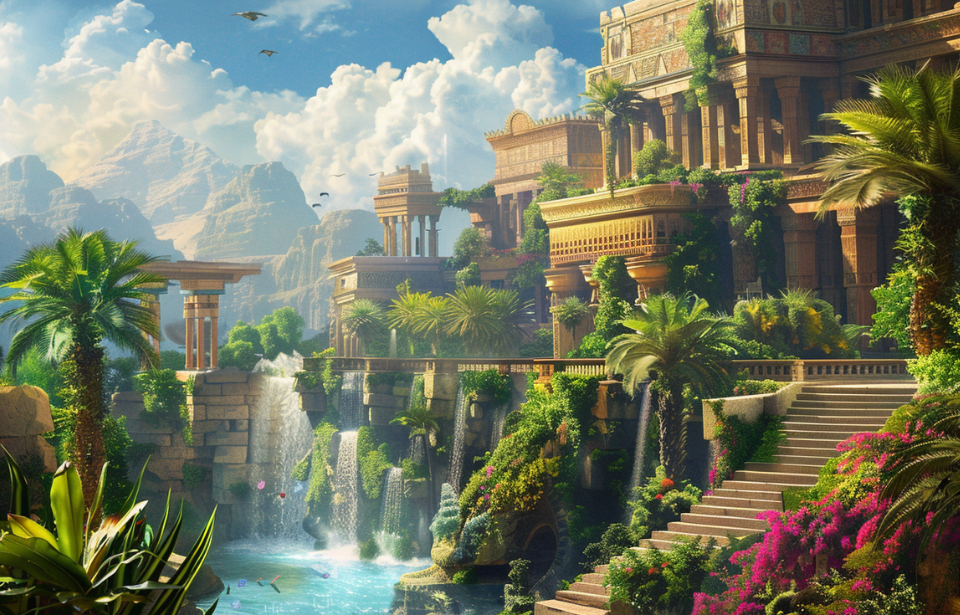The Hanging Gardens of Babylon, often celebrated as one of the Seven Wonders of the Ancient World, have captivated historians, archaeologists, and the public alike for centuries. This mythical garden, which has been shrouded in mystery and speculation, represents not just an architectural and horticultural achievement but also the human capacity for creating beauty and wonder. However, without any concrete evidence, the question remains: did the gardens truly exist?
The Mystery of the Hanging Gardens of Babylon
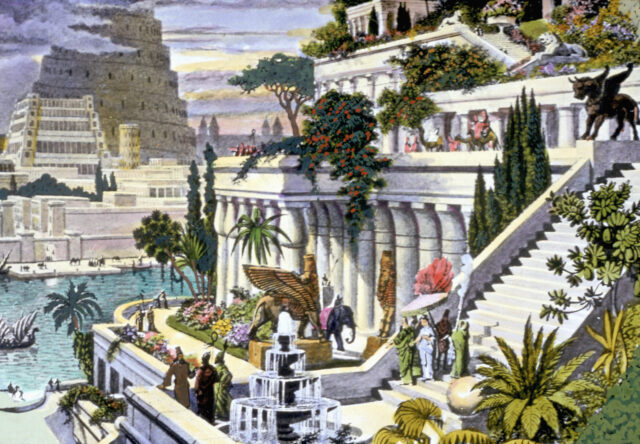
The Hanging Gardens of Babylon have long been a subject of fascination and intrigue. According to ancient texts, these gardens were built in the city of Babylon, near present-day Hillah, Babil province, in Iraq. The idea of gardens that defied gravity, lush and verdant, suspended above the ground, has sparked the imagination of countless individuals over millennia. Yet, despite their fame, concrete evidence of their existence and location remains elusive, leading some to question whether they were ever more than a figment of imaginative storytelling.
Historians and archaeologists have pieced together accounts from ancient writers, including Strabo and Philo of Byzantium, attempting to construct a coherent picture of what the gardens might have looked like. These descriptions paint a picture of a ziggurat complex featuring an elaborate irrigation system, which would have been a technological marvel of its time, allowing trees and plants to flourish in the arid climate of Mesopotamia. The gardens are often attributed to King Nebuchadnezzar II, who is said to have constructed them in the 6th century BCE for his homesick wife, Amytis of Media, who longed for the green hills and valleys of her homeland.
It was a marvel in architectural engineering
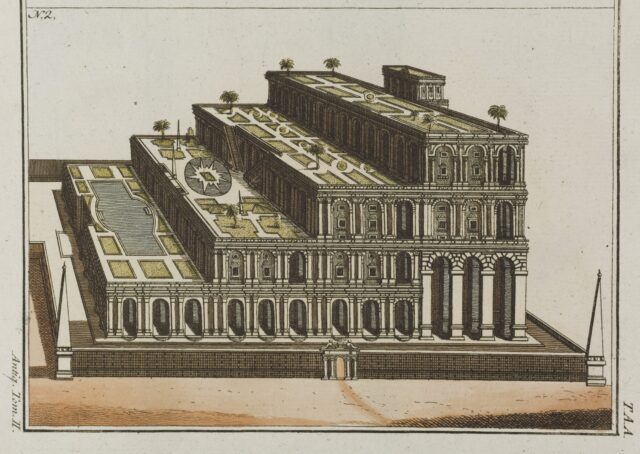
The engineering behind the Hanging Gardens of Babylon, as described by historical sources, showcases a blend of architectural ingenuity and horticultural skill. The gardens were reportedly built on a series of terraced platforms supported by arches and vaults, a technique that would have been revolutionary at the time. This structure allowed for the creation of a microclimate that could sustain a variety of plants, trees, and flowers, which were otherwise foreign to the arid environment of Babylon.
Water, the lifeblood of any garden, especially in such a dry climate, was said to have been brought up from the Euphrates River using a chain pump system. This early form of irrigation would have required significant manpower and resources, underscoring the gardens as a symbol of the king’s power and the empire’s technological prowess. The ability to maintain such a lush and vibrant oasis in the midst of the desert would have been nothing short of miraculous to the ancient observers.
It’s symbolically significant in Babylonian culture
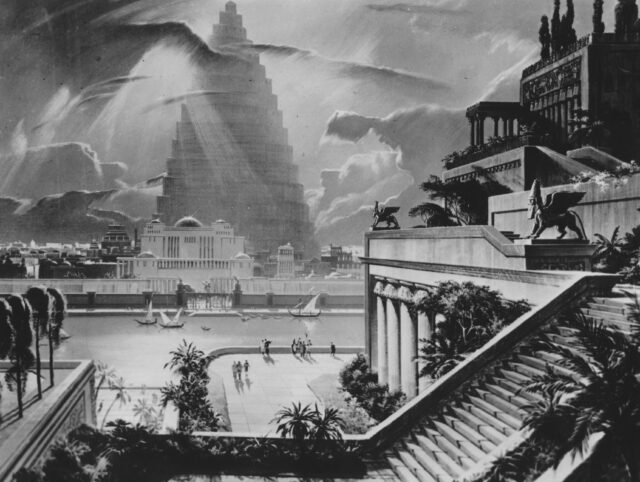
Beyond their architectural and horticultural achievements, the Hanging Gardens of Babylon held deep symbolic meaning within Babylonian culture. They were a testament to the might and wealth of the Babylonian empire, embodying its cultural and technological advancements. For the inhabitants of Babylon and visitors alike, the gardens would have served as a vivid demonstration of the empire’s ability to control and manipulate the natural world, bending it to the will of its ruler.
Furthermore, the gardens were believed to be a gift from King Nebuchadnezzar II to his Median queen, symbolizing not just love but the fusion of two cultures and the peace between their nations. In this light, the gardens were not only a marvel of engineering and a source of aesthetic pleasure but also a profound statement on the power of unity and the lengths to which one might go to bridge cultural divides.
Debates and theories surrounding the true existence of the gardens
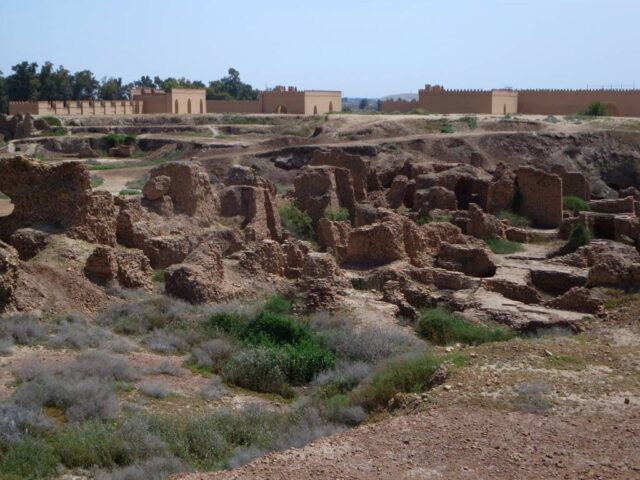
Despite their fame, the actual existence of the Hanging Gardens of Babylon has been a topic of debate among historians and archaeologists. The primary challenge lies in the lack of concrete archaeological evidence directly linked to the gardens. Some scholars suggest that the gardens were purely mythical, created as a symbol of paradise or as an embellishment of the grandeur of Babylon by subsequent writers.
Others, however, propose alternative theories, including the possibility that the gardens were located in a different city, such as Nineveh, and were later mistakenly attributed to Babylon by writers who conflated the two cities. Another theory posits that the gardens did indeed exist in Babylon but that their remains have either been destroyed over time or remain undiscovered.
Elements of the Garden in the Modern World
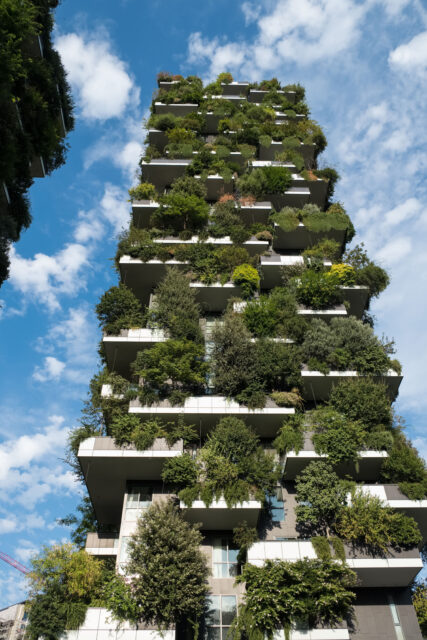
The legend of the Hanging Gardens of Babylon has had a profound impact on modern culture and imagination. They have inspired countless works of art, literature, and film, serving as a symbol of utopian beauty and the human desire to create paradise on earth. The gardens represent not just a lost wonder of the ancient world but also the timeless appeal of creating spaces that transcend the ordinary, blending human ingenuity with the beauty of the natural world.
In contemporary times, the concept of vertical gardens and green architecture can be seen as a modern iteration of the Hanging Gardens’ legacy. These sustainable practices, which aim to bring greenery into urban spaces, reflect the ancient desire to integrate nature into human habitats, demonstrating that the fascination with the Hanging Gardens continues to influence and inspire.
The ongoing search for the Hanging Gardens of Babylon
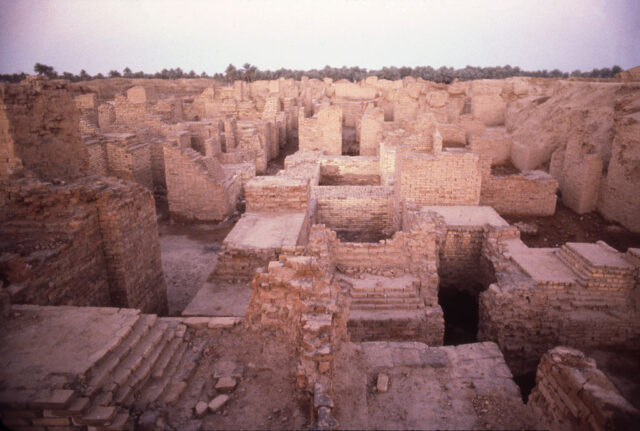
6th centuries BC. (Photo Credit: Nik Wheeler / Corbis / Getty Images)
The quest to find the Hanging Gardens of Babylon continues to captivate archaeologists and historians. Excavations in the region of ancient Babylon have uncovered evidence of advanced irrigation systems and garden spaces, lending credence to the theory that the gardens, or something akin to them, did indeed exist. However, definitive proof linking these findings to the legendary gardens as described in ancient texts remains elusive.
More from us: The Lighthouse of Alexandria Illuminating History Through the Ages
Advancements in technology, such as satellite imagery and ground-penetrating radar, offer new hope in the search for the Hanging Gardens. These tools allow archaeologists to explore areas that were previously inaccessible, raising the possibility that evidence of the gardens may yet be discovered, hidden beneath the sands of time.
